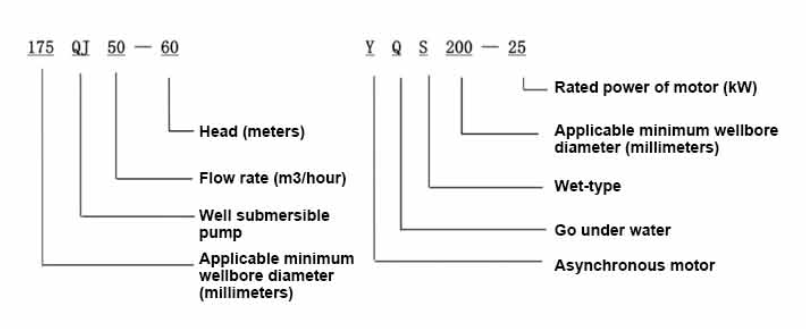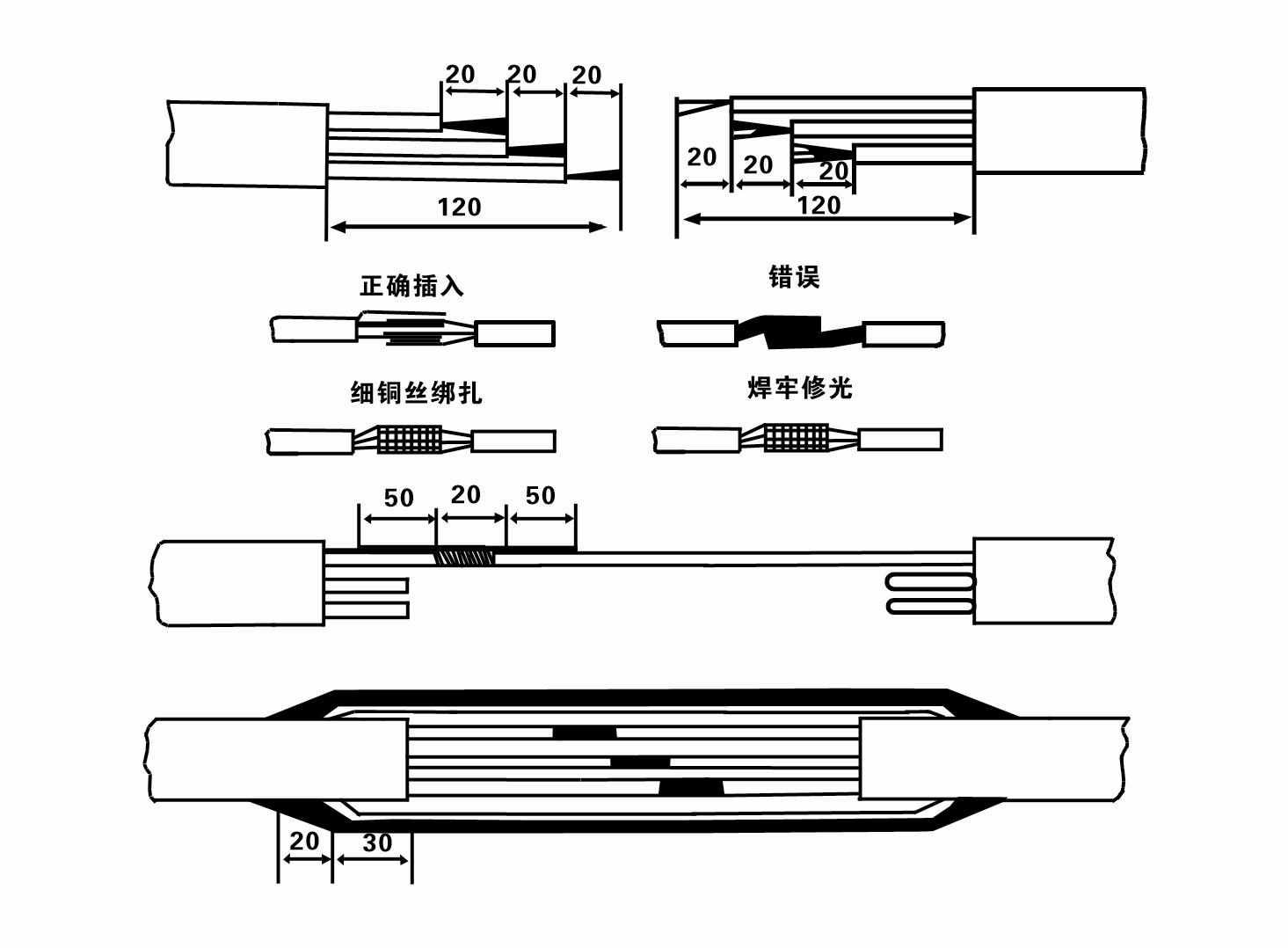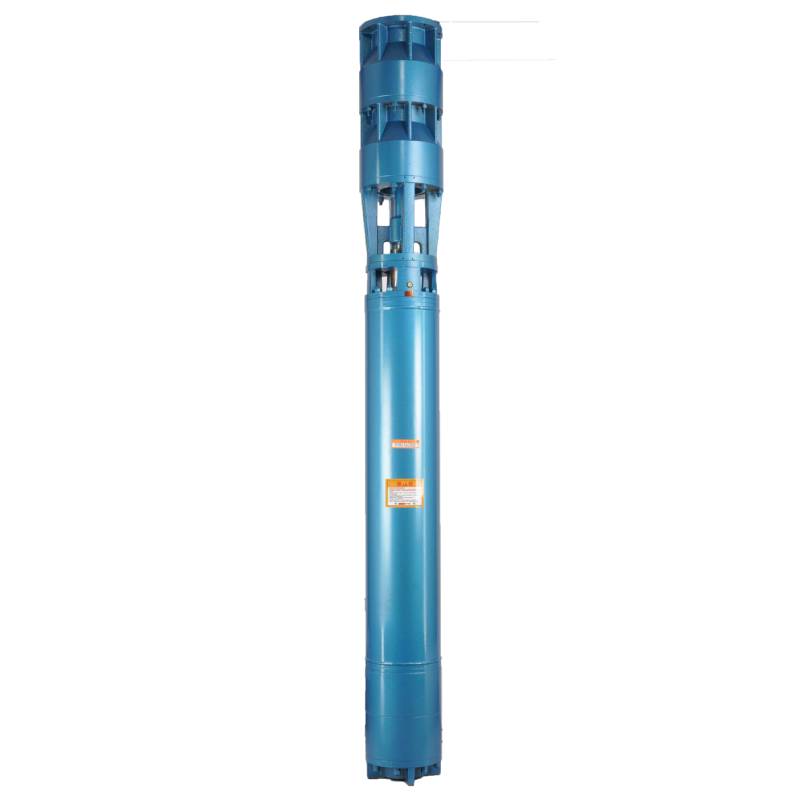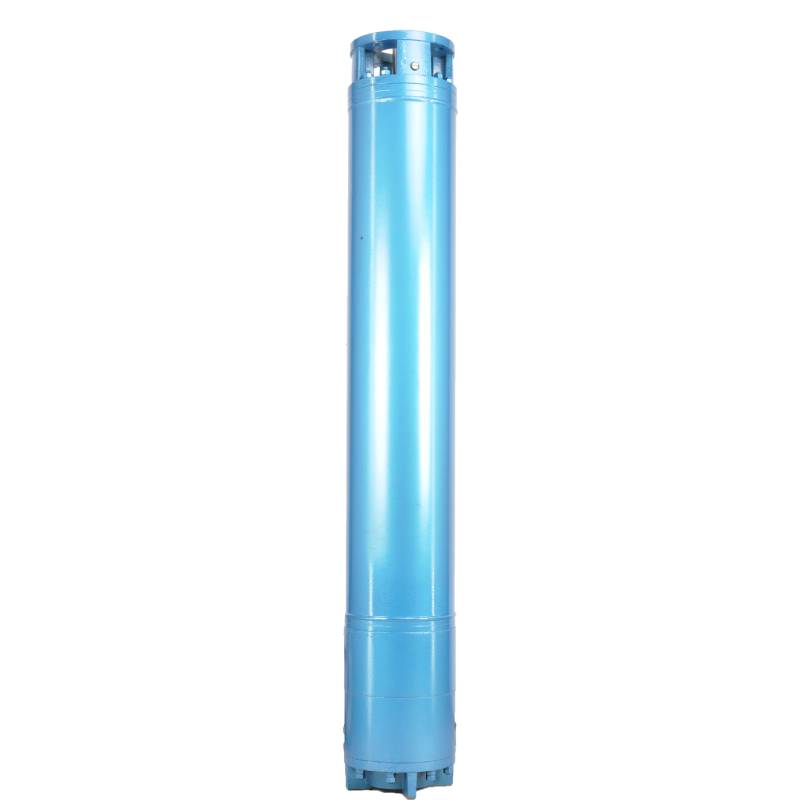This product adopts a variable frequency winding design, ensuring the motor's smooth conversion operation between 1HZ and 50HZ for a long time. This innovative design not only saves energy and prolongs service life, but also provides lasting and reliable performance in the work process. Whether in a home or industrial environment, this product will provide users with excellent efficiency and reliability, making it an indispensable tool in the manufacturing and production process.
1, tuʻuina atu eletise: tolu-vaega AC 380V (faʻapalepale + / - 5%), 50HZ (faʻapalepale + / - 1%).
2, lelei vai:
(1) water temperature is not higher than 20 °C;
(2) faʻamaʻi eleelea faʻamaʻi (fuainumera tele) e le sili atu i le 0.01%;
(3) PH tau (pH) 6.5-8.5;
(4) e le sili atu i le 1.5mg/L mea e maua i le hydrogen sulfide;
(5) e le sili atu i le 400mg/L le mea o iai ion chloride.
3, o le afi tapuni poʻo le faʻatumu vai susu fausaga, aʻo leʻi faʻaaogaina le vaʻa afi afi e tatau ona tumu i vai mama, e puipuia ai le tumu sese, ona faʻamalosi lea o le tui vai, faʻamau faʻamalolo ea, a le o lea e le faʻatagaina e faʻaaoga.
4, submersible pump must be completely submerged in the water, the diving depth is not greater than 70m, the bottom of the submersible pump from the bottom of the well is not less than 3m. 5, the well water flow should be able to meet the submersible pump water output and continuous operation, the submersible pump water output should be controlled at 0.7 - 1.2 times the rated flow.
6, e tatau ona saʻo le vaieli, e le mafai ona faʻaaogaina pe lafoai le pamu faʻafefe, naʻo le faʻaogaina i luga.
7, o le pamu submersible e tatau ona faʻafetaui ma le uaea e tusa ai ma manaʻoga, ma le masini puipuia le mamafa i fafo.
8, o le pamu e matua faʻasaina e aunoa ma se vai e leai se uta masini suʻega

| Fa'ata'ita'iga | tafe (m3/h) | Ulu (m) |
Saosaoa taamilo (suiga/matau) |
pamu vai(%) | Outlet lautele (mm) |
Fa'aoga lelei lautele(mm) |
Fa'atauaina power(KW) |
Fa'atauaina voltage(V) |
Fa'atauaina i le taimi nei(A) |
Malosiaga tau afi (%) | power factorcosφ | Vaega Ole tele ole tele (mm) |
Fa'amatalaga | |||||||||
| 300QJ200-40 | 200 | 40 | 2900 | 76 | 150 | 300luga | 37 | 380 | 77.8 | 85.0 | 0.85 | 281 | ||||||||||
| 300QJ200-60 | 60 | 55 | 115 | 85.5 | 0.85 | |||||||||||||||||
| 300QJ200-80 | 80 | 75 | 154.1 | 86.0 | 0.86 | |||||||||||||||||
| 300QJ200-100 | 100 | 90 | 183.8 | 86.5 | 0.86 | |||||||||||||||||
| 300QJ200-120 | 120 | 100 | 204.3 | 86.5 | 0.86 | |||||||||||||||||
| 300QJ200-140 | 140 | 125 | 249.5 | 87.5 | 0.87 | |||||||||||||||||
| 300QJ200-160 | 160 | 140 | 277.8 | 88.0 | 0.87 | |||||||||||||||||
| 300QJ200-180 | 180 | 160 | 317.5 | 88.0 | 0.87 | |||||||||||||||||
| 300QJ200-200 | 200 | 185 | 367.2 | 88.0 | 0.87 | |||||||||||||||||
| 300QJ200-240 | 240 | 220 | 436.6 | 88.0 | 0.87 | |||||||||||||||||
| 300QJ320-30 | 320 | 30 | 2900 | 77 | 200 | 300luga | 45 | 380 | 94.6 | 85.0 | 0.85 | 281 | ||||||||||
| 300QJ320-60 | 60 | 90 | 183.8 | 86.5 | 0.86 | |||||||||||||||||
| 300QJ320-90 | 90 | 125 | 249.5 | 87.5 | 0.87 | |||||||||||||||||
| 300QJ320-120 | 120 | 160 | 317.5 | 88.0 | 0.87 | |||||||||||||||||
This well submersible pump is a pump suitable for clean water. It is strictly prohibited to dig new wells and pump dirty water containing sediment. The voltage grade of the pump is 380/50HZ, and other submersible motors with different voltage grades need to be customized. Underground cables must be waterproof cables and must be equipped with starting equipment, such as distribution boxes, etc. The starting equipment should have common comprehensive motor protection functions, such as short circuit overload protection, dephase protection, undervoltage protection, grounding protection and idling protection, etc., in order to prevent timely tripping when abnormal conditions occur. During the installation and use process, the pump must have reliable grounding. It is strictly prohibited to push and pull the switch when your hands and feet are wet. The power supply must be cut off before installation and maintenance of the pump. An obvious sign "anti-electric shock" must be set up where the pump is used. Before going down the well or installation, the motor must be filled with distilled water or non-corrosive clean cold water, and the water inlet and outlet bolts must be tightened. When testing the pump on the ground, water must be filled into the pump chamber to lubricate the rubber bearings. The instant start time shall not exceed one second to check whether the steering is correct. Pay attention to safety when the pump is upright to prevent toppling and injury. Strictly in accordance with the provisions of the pump lift and flow range, to prevent the pump with a large flow at low lift or produce a large pull at high lift, resulting in extreme wear of thrust bearings and other parts, the motor overload and burn. After the pump into the well, the measurement of the motor to the ground insulation resistance should not be less than 100MΩ. After starting, regularly observe the voltage and current, and check whether the motor winding insulation meets the requirements; if the pump storage temperature below freezing point, should be drained to prevent the water in the motor cavity from freezing and cause the motor damage due to low temperature.
The pump part is mainly composed of pump shaft, impeller, shunt shell, rubber bearing, check valve body (optional) and other components. The motor part is mainly composed of base, pressure regulating diaphragm, thrust bearing, thrust plate, lower guide bearing seat, stator, rotor, upper guide bearing seat, sand ring, water inlet section, lead cable and other components.
O uiga autu o le oloa e aofia ai:
- 1.The motor is a water-filled wet submersible three-phase asynchronous motor. The motor cavity is filled with clean water, used to cool the motor and lubricate the bearing. The pressure regulating diaphragm at the bottom of the motor is used to adjust the expansion and contraction pressure difference of the water in the body caused by the temperature rise of the motor.
- 2. In order to prevent the sand particles from entering the motor, two sand seals are installed at the upper end of the motor shaft extension, and a sand control structure is formed by installing the sand ring.
- 3. In order to prevent the pump shaft from jumping when starting, the pump shaft is connected with the motor shaft through a coupling, and the thrust bearing is installed at the bottom of the motor.
- 4. The lubrication method of the motor and the pump bearing is water lubrication.
- 5. The stator winding of the motor adopts high quality submersible motor winding wire with high insulation performance.
- 6. The pump is designed by computer CAD, with simple structure and excellent technical performance.

(1) Sauniuniga aʻo leʻi faʻapipiʻiina:
1. Siaki pe fetaui le pamu fa'asusu i le fa'aogaina ma le lautele o lo'o fa'ailoa mai ile tusi lesona.
2. Fa'aaogaina o se obiect mamafa ma le lautele e tutusa ma le maualuga pito i fafo o le pamu fa'asusu, fua pe mafai e le inneldiameter o le vaieli ona ofi le pamu fa'asusu, ma fua pe o le loloto o le vai e fetaui ma mana'oga fa'apipi'i.
3. Siaki pe mama le vaieli ma pe o le vaieli e pala. 'Aua ne'i fa'aogaina se pamu eletise e fa'ato'ilaloina e fufulu ai le palapala ma le oneone o le pa'u welor e 'alofia ai le vave fa'aleagaina o le pamu eletise fa'alalo.
4. Siaki pe talafeagai le tulaga o le faʻapipiʻi welhead faʻapipiʻi ma pe mafai ona tatalia le tulaga o le iunite atoa
5. Siaki pe ua mae'a ma fa'apipi'i lelei vaega o pamu fa'asusu e tusa ai ma le fa'ata'otoga o lo'o i totonu o le tusi lesona.
6. Tatala le fa'avili vai ma fa'atumu le oga o le afi i vai mama, e le pala (matau. ia mautinoa e fa'atutu i luga), ona fa'amau lea o le fa'asuavai. A maeʻa le 12 itula o le tui vai, e le tatau ona itiiti ifo i le 150M Q le teteʻe o le afi ile 500V pe a fua ile laulau lulu 500V.
7. Cable joint, cut off a 120mm rubber sleeve from one end of the outgoing cable and the matching cable with an electrician's knifethen stagger the length of the three core wires in a stepped shape, peel off a 20mm copper core, scrape of the oxide layer on theoutside of the copper wire with a knife or sand cloth, and insert the two connected wire ends in palirs.After tying the layer tightly with fine copper wire, solder it thoroughly and firmly, and sand of any. burrs on the surface. Then, forthe three joints, use polyvester insulation tape to wrap them in a semi stacked manner for three lavers. Wrap the two ends of thewrapping layer tightywith nyion thread,and then use a semi stacked method to wrap the tape for three layers. Wrap the outellayer with high-pressure insulation tape for three layers. Finally, fold the threestrands together and repeatedly wrap them for fivelayers with high-pressure tape. Each layer must be tightly tied, and the interlayer joints must be tight and fimm to prevent water frompenetrating and damaging the insulation, After wrapping, soak in water at room temperature of 20 ’c for 12 hours, and measurethe insulation resistance with a shaking table, which should not be less than 100M Ω
O le fa'apipi'i fa'apipi'i fa'asologa o fa'agasologa o uaea e fa'apea:
8. Fa'aaoga se multimeter e siaki ai pe o feso'ota'i laina e tolu-vaega ma pe fa'atatau i le paleni DC.
9. Siaki pe sili atu le mamafa o le eletise ma le transformer, ona faʻafesoʻotaʻi lea o le ki o le puipuiga o le mamafa poʻo le amataina o meafaigaluega. Va'ai le Laulau 2 mo fa'ata'ita'iga fa'apitoa, ona sasaa lea o se pakete vai i totonu o le pamu vai mai le pamu vai e fa'alu'u ai pa'u pa'u i totonu o le pamu, ona tu'u sa'o lea o le pamu eletise fa'ato'ilalo ma tumau. ma siaki pe o ogatasi le fa'atonuga ma le fa'ailoga fa'atonu. Afai e leai, fesuiai soʻo se lua fesoʻotaʻiga o le tolu-vaega uaea. Ona faʻapipiʻi lea o le faamama ma sauni e alu i lalo o le vaieli. Afai e faʻaaogaina i taimi faʻapitoa (e pei o alavai, alavai, vaitafe, vaituloto, vaituloto, ma isi), o le pamu eletise e tatau ona faʻalagolago i le eleele.
(2) Fa'apipi'i meafaigaluega ma meafaigaluega:
1. Tasi le pea o filifili si'i mo le sili atu i le lua tone.
2. O se tripod ma le maualuga tuusaʻo e le itiiti ifo i le fa mita.
3. E lua maea tautau (uaea uaea) e mafai ona tauave le mamafa e sili atu ma le tasi tone (e mafai ona tauave le mamafa o se seti atoa o pamu vai).
4. Fa'apipi'i ni paipa se lua (splints).
5. Tu'u, samala, sikuli, meafaigaluega eletise ma meafaigaluega, ma isi.
(3) Fa'apipi'i pamu eletise:
1. O le faʻapipiʻiina o le faʻapipiʻiina o le pamu eletise o loʻo faʻaalia i le Ata 2. O faʻamaufaʻailoga faʻapipiʻi faʻapitoa o loʻo faʻaalia i le Laulau 3 "Lisi o Fua Faʻapipiʻi o le Pump Eletise Submersible".
2. O pamu eletise e mafai ona faʻafefeteina ma le ulu e itiiti ifo i le 30 mita e mafai ona sisi saʻo i totonu o le vaieli e faʻaaoga ai faʻagaau ma maea uaea poʻo isi maea hemp e mafai ona tauaveina le mamafa atoa o le masini, paipa vai, ma vai i totonu o paipa.
3. O pamu ma le ulu e sili atu i le 30 mita e faʻaaogaina paipa uʻamea, ma o le faʻasologa faʻapipiʻi e faʻapea:
①Fa'aoga le pipii e pipii ai le pito pito i luga ole vaega o le pamu vai (o le afi ma le pamu vai o loʻo fesoʻotaʻi i le taimi lea), sii i luga i se filifili tautau, ma nonoa lemu i totonu o le vaieli seia tuʻu le faʻamau i luga o le ulu vaieli ma aveese le filifili tautau.
② Fa'aaoga se isi pea paipa e pipii ai se paipa, sii i luga i se filifili tautau e 15 cm le mamao mai le apa, ma tuutuu i lalo lemu. I le va o lau paipa ma le pamu pamu Fa'amau le pa'u ma fa'amau le paipa ma pamu fa'atasi i fa'amau, nati ma fufulu vaipuna.
③ Si'i teisi le pamu vai, aveese le pipii i le pito pito i luga o le pamu vai, nonoa le uaea i le paipa vai i se pa'u palasitika, ma nonoa malie i lalo seia tu'u le pipii i le ulu vaieli.
④ Fa'aaoga le auala lava e tasi e nonoa uma ai paipa vai i totonu o le vaieli.
⑤A maeʻa ona fesoʻotaʻi le uaea taʻitaʻia i le ki faʻatonutonu, e faʻafesoʻotaʻi i le sapalai eletise tolu-vaega.
(4) Mea e matauina i le taimi o le faʻapipiʻiina:
1. Afai e maua se fa'alavelave fa'afuase'i i le taimi o le pamu, liliu pe toso le paipa vai e fa'ato'ilalo ai le mea fa'amau. Afai e le aoga lava faiga eseese, faamolemole aua le faamalosia le pamu i lalo e aloese ai mai le faaleagaina o le pamu eletise ma le vaieli.
2. I le taimi o le faʻapipiʻiina, e tatau ona tuʻu se paʻu paʻu i le flange o paipa taʻitasi ma faʻapipiʻi tutusa.
3. A tuu i lalo le pamu vai i totonu o le vaieli, e tatau ona tuʻu i le ogatotonu o le paipa vaieli e puipuia ai le pamu mai le faʻasaga i le puipui o le vaieli mo se taimi umi, ma mafua ai ona tete le pamu ma salu ma mu le afi. .
4. Fuafua le loloto o le pamu vai i le pito i lalo o le vaieli e tusa ai ma tulaga o le tafe o le oneone ma le palapala o le vaieli. Aua le tanumia le pamu i le palapala. O le mamao mai le pamu vai i le pito i lalo o le vaieli e masani lava e le itiiti ifo i le 3 mita (silasila i le Ata 2).
5. O le loloto o le vai o le pamu vai e tatau ona le itiiti ifo i le 1-1.5 mita mai le maualuga o le vai i le node o le vai (silasila i le Ata 2). A leai, e mafai ona faigofie ona faʻaleagaina le paʻu vai.
6. O le si'itia o le pamu vai e le mafai ona maualalo tele. A leai, e tatau ona fa'apipi'i se alavai faitoto'a i luga o le paipa vai e fa'atonutonu ai le tafe o le pamu i le nofoaga fa'atatau e puipuia ai le afi mai le mamafa ma mu ona o le tele o tafega.
7. A oʻo ina tamoʻe le pamu vai, e tatau ona faʻaauau pea le gaosiga o le vai ma e oʻo lava, o le taimi nei e tatau ona mautu (i lalo o tulaga faigaluega faʻatulagaina, e masani lava e le sili atu i le 10% o le taimi nei faʻamauina), ma e le tatau ona i ai se vibration poʻo le pisa. Afai ei ai se faaletonu, e tatau ona taofi le masini e suʻe le mafuaʻaga ma faʻaumatia.
8. A faʻapipiʻi, faʻalogo lelei i le faʻatulagaina o le uaea faʻavae afi (silasila i le Ata 2). Afai o le paipa vai o se paipa u'amea, ta'ita'i mai le fa'amau o le vaieli; pe a avea le paipa vai o se paipa palasitika, taʻitaʻia mai le faʻailoga o le pamu eletise.
- 1.After the submersible pump is installed, check the insulation resistance and three-phase conduction from the switch again, check whether the instrument and the connection of the start equipment are wrong, if there is no problem, the trial machine can be started, and observe whether the indicator readings of the instrument exceed the rated voltage and current specified on the nameplate after the start, and observe whether the pump has noise and vibration phenomenon. If everything is normal, it can be put into operation.
- 2. After the first operation of the pump for four hours, the motor should be shut down to test the thermal insulation resistance quickly, and its value should not be less than 0.5 megaohm.
- 3. After the pump is shut down, it should be started after five minutes to prevent the water column in the pipe from being completely reflowed and causing excessive motor current and burnout.
- 4.After the pump is running normally, in order to prolong its service life, it is necessary to check the power supply voltage, running current and insulation resistance regularly to see if they are normal.If the following conditions are found, the equipment should be shut down immediately to troubleshoot.
- (1)Under the rated working conditions, the current exceeds 20% of the rated value.
- (2)The dynamic water level drops to the inlet part, resulting in intermittent water discharge.
- (3)The submersible pump vibrates violently or emits noisy noise.
- (4)The power supply voltage is lower than 340 volts.
- (5)A fuse is burned out.
- (6)The water pipe is damaged.
- (7)The thermal insulation resistance of the motor to the ground is less than 0.5 megaohm.
- These inspections will help to ensure the normal operation of the pump, improve its reliability and stability, so as to ensure its durability and service life.
- 5.unit disassembly:
- - untie cable rope, remove the pipeline part, remove the wire plate.
- - vili i lalo le fa'amau vai, tu'u le vai i totonu o le potu afi.
- - remove the filter, loose the fixed screw on the coupling fixed motor shaft.
- - screw down the bolt connected with the motor at the inlet junction, separate the pump and the motor (pay attention to the unit cushion when separating, prevent the bending of the pump shaft)
- - pump disassembly sequence is: (see figure 1) inlet junction, impeller, guide housing, impeller...... check valve body, when removing the impeller, use special tools to loosen the conical sleeve of the fixed impeller first, avoid bending the pump shaft and each part in the disassembly process.
- - motor disassembly process is: (see figure 1) place the motor on the platform, remove the nut, base, shaft head lock nut, thrust plate, key, lower guide bearing seat, double head bolt from the bottom of the motor in turn, then take out the rotor (pay attention not to damage the wire package) and finally remove the connecting section and upper guide bearing seat.
- - unit assembly: Before assembly, the rust and dirt of the parts should be cleaned, and the mating surfaces and fasteners should be coated with sealant. Then they should be assembled in the reverse order of disassembly (the up and down momentum of the motor shaft is about 1 mm after assembly). After assembly, the coupling should be flexible, and then the filter screen test machine.
- 6.The submersible pump should be dismantled and repaired according to Article 5 for each operation year, or less than one year, but the submersible time has reached two years, and the worn parts should be replaced.
1, tuu i fafo le vai i totonu o le afi (aemaise lava i le taumalulu e puipuia ai le afi mai le malulu), ma nonoa lelei le uaea.
2, store in an indoor room without corrosive substances and gases, with a temperature below 40 °C.
3, faʻaaogaina umi e tatau ona gauai atu i le puipuia o le ele o pamu submersible.
- Fa'aoso
- lima lima
- lima o le pa'u pa'u
-
Mama fa'amau
01 Vaivai loloto
02 Suavai maualuga
03 vai mai mauga
04 vai olo
05 Fa'asusu fa'ato'aga
06 fa'asusuina o togalaau
07 vai inu vai
08 vai aiga










